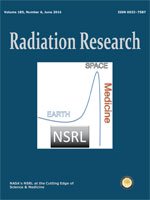Stereotactic body radiation therapy (SBRT) has found an important role in the treatment of patients with non-small cell lung cancer, demonstrating improvements in dose distribution and even tumor cure rates, particularly for early-stage disease. Despite its emerging clinical efficacy, SBRT has primarily evolved due to advances in medical imaging and more accurate dose delivery, leaving a void in knowledge of the fundamental biological mechanisms underlying its activity. Thus, there is a critical need for the development of orthotropic animal models to further probe the biology associated with high-dose-per-fraction treatment typical of SBRT. We report here on an improved surgically based methodology for generating solitary intrapulmonary nodule tumors, which can be treated with simulated SBRT using the X-RAD 225Cx small animal irradiator and Small Animal RadioTherapy (SmART) Plan treatment system. Over 90% of rats developed solitary tumors in the right lung. Furthermore, the tumor response to radiation was monitored noninvasively via bioluminescence imaging (BLI), and complete ablation of tumor growth was achieved with 36 Gy (3 fractions of 12 Gy each). We report a reproducible, orthotopic, clinically relevant lung tumor model, which better mimics patient treatment regimens. This system can be utilized to further explore the underlying biological mechanisms relevant to SBRT and high-dose-per-fraction radiation exposure and to provide a useful model to explore the efficacy of radiation modifiers in the treatment of non-small cell lung cancer.
BioOne.org will be down briefly for maintenance on 17 December 2024 between 18:00-22:00 Pacific Time US. We apologize for any inconvenience.
How to translate text using browser tools
25 May 2016
Effective Rat Lung Tumor Model for Stereotactic Body Radiation Therapy
Zhang Zhang,
Michelle Wodzak,
Olivier Belzile,
Heling Zhou,
Brock Sishc,
Hao Yan,
Strahinja Stojadinovic,
Ralph P. Mason,
Rolf A. Brekken,
Rajiv Chopra,
Michael D. Story,
Robert Timmerman,
Debabrata Saha
ACCESS THE FULL ARTICLE

Radiation Research
Vol. 185 • No. 6
June 2016
Vol. 185 • No. 6
June 2016




